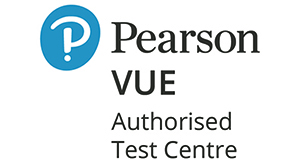Tracking cyber attacks every second is not child’s play. That’s because cybercrime can also happen through social engineering in cybersecurity, i.e., manipulating the user to obtain sensitive information.
What is social engineering?
Social engineering in cyber security is an attack vector rather than a cyber security risk. It involves manipulating people to provide routine security codes to gain illicit control over systems, networks, and locations for financial gain. These crimes are thus built on the psychology and behavior of users.
Criminals use this technique to benefit from the trust of users. Fraudsters usually persuade innocent people to disclose information, spread malware infections, or grant unauthorised access to systems. Once the attacker understands the user’s motivation, he deceives and distracts the user by learning ways to penetrate his software stealthily.
All that is needed to get the information is a human interaction between the attacker and the user. They gain users’ trust by compromising their information rather than using violent cyber security breach techniques. A social engineering attack follows a vicious cycle of steps:
1) Step one – involves collecting basic user information and tracking their activities online.
2) Step two is penetration, developing and initiating a relationship with the user to establish trust. For example, users may receive regular messages to check their bank details.
3) The third step is to use the victim to highlight the information.
4) The final step is disconnecting the user once the damage has been done.
This process can take place through online means such as emails, fake websites, links, chats, social media ads, or even word-of-mouth information spread over a long period.
Different social engineering attacks
Users are manipulated into sharing confidential information without their knowledge. It is because these cyber security attacks can happen in various unthinkable ways.
Harassment
Phishing means making false promises to arouse the victim’s greed or curiosity. The attacker leaves a physical device infected with malware, such as a USB drive (Universal Serial Bus) or even email attachments, for the victim. Malware is also installed unknowingly when a curious target inserts it into their system or clicks on an extension. The user is thus hacked.
Phishing
This attack occurs when a fraudster masquerades as a trusted administrator, organisation, or person. The attacker builds trust by convincing the victim to reveal personal information and other data assets.
Scareware
Scareware involves deceiving users with false alarms and malicious threats. Users are tricked into thinking that their system is infected or that they have accidentally downloaded an illegal file. It allows fraudsters to assist by providing a solution to the system problem. However, in reality, the user is tricked into purchasing and installing the attacker’s malware, passing their credentials to the fraudsters.
Watering hole
A watering hole is about finding loopholes and forcing users to disclose information. In simple words, an attacker tries to infect web pages that a user might browse. It is a long process where the attacker tracks the user’s web activity and discovers vulnerabilities, finally flooding these sites with malware. This way, when users accidentally browse a place, they are tricked into giving the attacker certain information.
Tailgating
A back-door attack is also known as “piggybacking.” It occurs when an attacker enters a protected system by following someone who has authorised access. The attack is based on the assumption that the user with access is careful enough to welcome the attacker with open arms, assuming that the attacker is allowed to be there. It may include creating a false/duplicate identity to appear as an employee of the organisation.
Physical intrusion attacks
As the name suggests, in a “physical intrusion,” the attacker personally contacts the user, acting as an authority figure, to get control of their highly personal information. Such attacks are common in environments such as governments, businesses, or other organisations.
Detection techniques
Detecting these attacks is more complicated than it might seem. It requires users to have a high level of cyber security awareness, as they can sneak into your system. Therefore, use the following techniques to detect such attacks:
1) Look for authorised sites, numbers, and links: Always check for authorisation if you receive a link from a social networking application. Even when browsing the web, look for official sites; many duplicate sites fool users.
2) Check for spam: If your emails and chats are full of (unknown) files and attachments from a seemingly legitimate source, you must be careful.
3) Check what rewards are offered: If an attacker/sender is offering you a reward for information, check whether the offer is practically valid or too good to be true.
4) Check the senders: Sometimes, an attacker may even send you unauthorised links, messages, and files disguised as someone you know, colleagues, close friends, and relatives.
Preventive measures
Once signs of a possible social engineering attack have been identified, it becomes essential to take preventive measures to reduce the number of seizures. Awareness is the first and most important of these, but here’s more on what you can do:
1) Communication and account management: Communicating online can leave you vulnerable. Social media, emails, and text messages are some of the easiest and most frequently used targets. So, you should:
(a) Never click on links in unauthorised emails or messages.
- b) Use secure passwords and a password manager.
- c) Refrain from sharing your name, date of birth, phone number, or other personal information.
- d) be careful when making online friendships
2) Use secure devices: Devices constantly communicate with network vibrations, making it easy for attackers to track your location and phone numbers. It is therefore essential to:
(a) use comprehensive internet security software
- b) Never leave your devices in unsafe public places.
- c) Update all software as soon as a new version is available.
- d) Check for known data breaches of online accounts.
3) Use secure networks: Attacks can also be caused by careless network use. Here are some protective measures you should take:
- a) Never connect to unfamiliar or public Wi-Fi networks. Also, keep unknown users from connecting to your network at home, work, or public places.
- b) Use a VPN (Virtual Private Network), which includes an encrypted tunnel on any internet connection you use.
- c) Ensure the security of all devices and services connected to your network.
Conclusions
Social engineering incidents in the field of cybersecurity are on the rise. Attackers and fraudsters use sophisticated techniques to lure users and gain their trust to obtain necessary, confidential information that is otherwise difficult to obtain. It is essential to understand the methods of these attacks and to mitigate their impact through various prevention methods.
Logitrain is the best learning provider, and the candidates can join our cyber security awareness course now!





































































